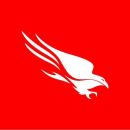Midway through the COVID-19 pandemic — and ever since — employers and employees alike have questioned the effects of hybrid work. For example, do the benefits of working from home outweigh the disadvantages? Does time saved from commuting to and from the office get consumed by the new, always-on work culture?
Several experts who study such things found that indeed burnout and loneliness are social risks created by remote work, as detailed in a Harvard Business Journal article in late 2021. Working from home is not the only factor contributing to these problems, though. Fast-paced work environments, difficulties accessing work-life balance, an unending demand for skills development amidst evolving technologies, and scant diversity, equity and inclusion support in some companies all lead to unhealthy work situations. Add the pervasive stigma attached to mental health challenges and it has the makings of a downward spiral.
Fortunately, many companies fully recognize these risks and take intentional steps to rectify the problem. Smart employers like these recognize how taking action can reduce turnover and associated costs. For employees, it can mean better health, pride in their personal productivity and chances for professional growth and advancement.
Built In Austin spoke with two leaders at Canva and CrowdStrike who understand this and are working to support team members who might need help — even at times when they don’t mention it.
Canva provides free, online design tools for creating videos, logos, social media posts, presentations and more.
How do you identify if an employee is burned out but not telling you? What signs should managers look for?
As a coach — Canva’s term for manager — a key part of my role is supporting my team to grow, thrive and do the best work of their lives. Burnout can be insidious and have long-term impacts on well-being so I have found it really important to understand the signs to look out for. A good tip is to tune in to any behaviors that may seem uncharacteristic of folks on your team such as when someone turns off their camera on Zoom calls when they typically have it on. Other signs could include being less vocal in team conversations or not sharing input as freely on projects. As a coach you get to know your team pretty well so it’s about getting really intentional about looking out for and spotting those signs.
If you identify a burned-out employee, how do you begin addressing the issue?
The first place to start is to have an open and authentic conversation with your teammate. Ask them how they're doing and give them space to share openly about how they're feeling.
Burnout can be caused by a number of factors. Workload can sometimes be a contributor, but there can be other factors at play, too, like experiencing a loss of autonomy or a lack of alignment between the work and a person’s goals and drivers such as what truly motivates them. It's important to work together to create a career plan with each member of your team that maps out their growth goals and aspirations to motivate them to perform at their best. Prioritize regular check-ins to ensure alignment with the plan and find out if there are any roadblocks that are stopping them from achieving their goals.
Prioritize regular check-ins to ensure alignment with the plan and find out if there are any roadblocks that are stopping them from achieving their goals.”
If a team member’s well-being is being impacted by their workload this is a great opportunity to work together to review, reprioritize and reset on the current workload based on which projects are going to create the most impact for both your team member and the company.
Sometimes when we’re working hard we can forget to take breaks. Having time away can provide space for your team member to fully recharge.
What resources and benefits does your company offer to employees dealing with burnout?
Canva offers a range of resources to help our team manage stress and prevent burnout. To support people’s physical and mental health we encourage recharge days, flexible leave and also offer access to the Canva Care Program. The Canva Care Program is Canva’s mental well-being offering for Canvanauts where we provide access to mental health experts across the globe. Relevant topics include how to manage stress and imposter syndrome.
When it comes to understanding areas for professional growth and ensuring career plans align with their values, Canva provides opportunities for internal coaching and other resources to help Canvanauts perform at their best and achieve their personal and work goals. Some of these include how to evolve attitudes, transform mindset blockers and develop the confidence to grow skills and increase individual impact.
CrowdStrike is a cloud-native platform that stops security breaches, protecting endpoints, cloud workloads, identity and data.
How do you identify if an employee is burned out but not telling you? What signs should managers look for?
For me, it’s important to set up weekly one-on-ones with each of my employees. Some weeks, there isn’t as much work to cover but I still make sure that time is designated and offered. I’ve rarely had employees pass up the opportunity and when there aren’t enough work topics to cover the entire slot, we chitchat about our personal lives.
I think it’s also important to get to know your employees outside of their work personas and vice versa. It gives me a better intuition when something is off. Having that rapport makes them feel comfortable coming to me, even if it’s just to blow off some steam. As a manager, it’s my duty to be proactive and ask the simple questions of how they are doing and what can I do to help. I think the obvious signs are changes in attitude, engagement, missing details and a slip in performance. Getting regular temperature checks is my way of monitoring signs of burnout and preventing it.
If you identify a burned-out employee how do you begin addressing the issue?
I’ll usually take some time to observe the situation to gather up facts which consist of timestamps, events and examples to help me provide constructive feedback and remove any assumptions. I address the concern in my one-on-one and start by asking the open-ended questions — “How are you doing? How have you been feeling lately?”— before exploring the issue. I may discover that there is a personal matter that is affecting them. Then when I’m wrapping up the call it’s important to express support and mutually agree on a plan to get them back on track. When I joined CrowdStrike my leader said, “Work will get in the way of life and life will also get in the way of work,” which really resonated with me. It’s a good reminder to be compassionate and that work/life balance isn’t always easy.
When I joined CrowdStrike my leader said ‘Work will get in the way of life and life will also get in the way of work,’ which really resonated with me.”
What resources and benefits does your company offer to employees dealing with burnout?
CrowdStrike offers a generous PTO policy which gives employees flexibility in planning days off, even if it’s for a mental health day. Our medical insurance also covers therapy sessions. Annually, the company sends out employee surveys to get a pulse on what’s going well and where there are areas of opportunity. With this information, the company re-evaluates our benefits and usually makes improvements. My career at CrowdStrike has definitely been one where work and life have blended together in a good way; I feel greatly supported.








